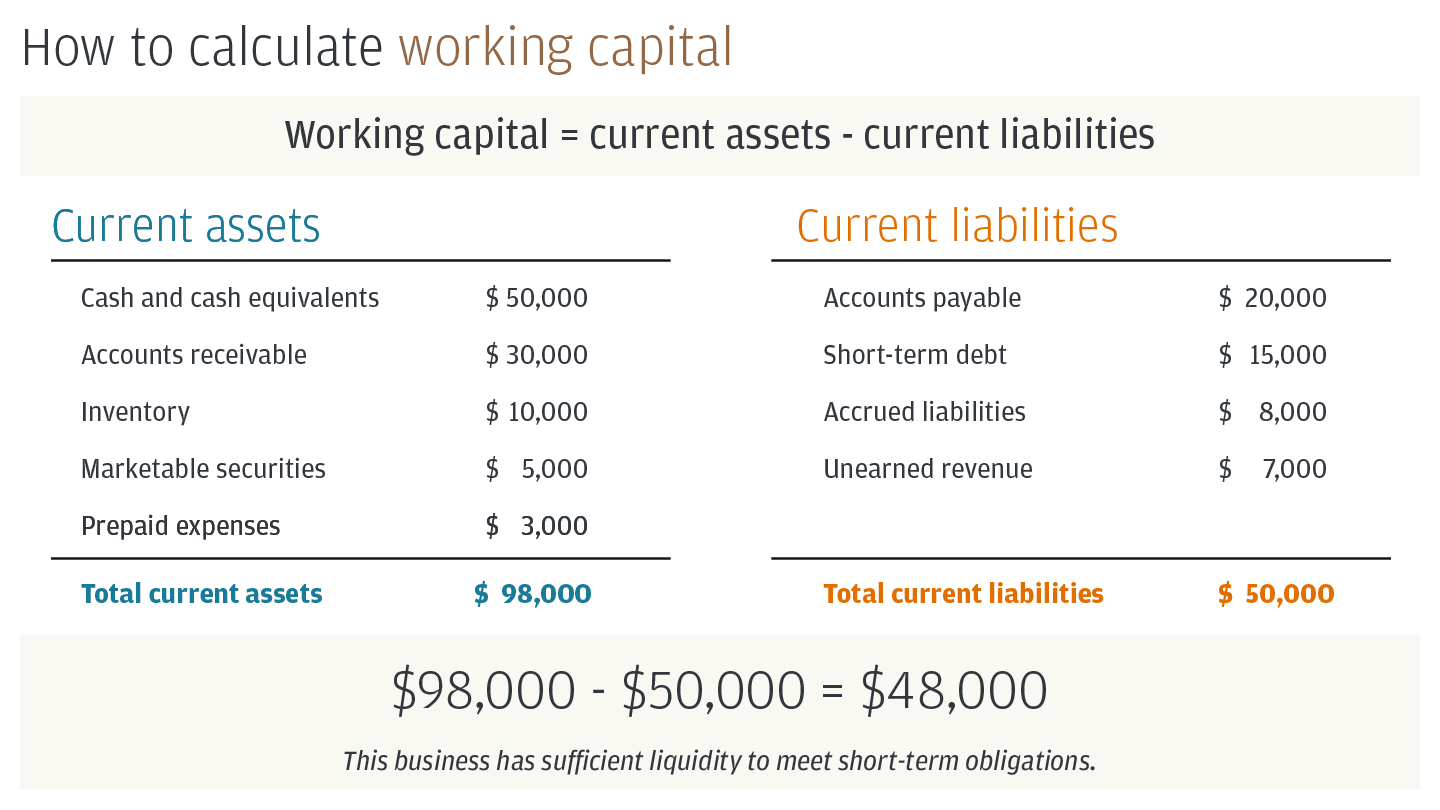
5 min read
Key takeaways
- Working capital measures your company’s ability to fund daily operations and meet short-term obligations. Calculated as current assets minus current liabilities, it reveals liquidity strength and operational efficiency.
- Effective working capital management enables businesses to accelerate growth, reduce financing costs and maintain operational flexibility during economic uncertainty.
- Companies can optimize working capital by accelerating accounts receivable, strategically managing supplier terms and implementing digital payment systems to improve cash conversion cycles.
Working capital is the lifeblood of any business, fueling day-to-day operations and helping companies meet financial obligations while pursuing growth opportunities. Understanding how to calculate, analyze and manage working capital helps your business maintain the liquidity it needs to operate and grow.
What is working capital?
Working capital, also called net working capital, represents the funds available to meet day-to-day operational needs. It’s calculated as the difference between current assets and current liabilities. Current assets include cash, accounts receivable and inventory, while current liabilities include accounts payable and other short-term obligations.
Why is working capital important?
Working capital directly influences your business’s ability to operate efficiently and grow. Effective working capital management can provide:
- Liquidity management: Ensuring sufficient liquidity to cover short-term liabilities on time is critical for maintaining uninterrupted day-to-day operations. These liabilities include payments to suppliers and employees, short-term loan installments, taxes payable, utilities and other immediate obligations.
- Operational efficiency: Effective working capital management allows your business to maintain smooth operations, handle production and deliver products and services efficiently—all crucial to maintaining customer satisfaction.
- Flexibility and growth: Your business needs adequate working capital to seize growth opportunities such as expanding into new markets and investing in new projects. Working capital provides flexibility to respond quickly to such opportunities without relying heavily on external financing.
- Risk management: Strategic working capital management creates a buffer against unexpected financial challenges such as economic downturns or fluctuations in demand. Well-managed working capital helps your business navigate uncertainties and maintain stability during challenging times.
- Cost management: Optimizing working capital enables your business to avoid late payment penalties and capitalize on suppliers’ early payment discounts, improving cost savings and profitability. Additionally, effective working capital management allows your company to finance operations internally rather than relying on external borrowing.
How to calculate working capital
Working capital = total current assets - total current liabilities
Calculating working capital for your business is a straightforward process.
- Identify current assets.
- Cash and cash equivalents: Money in hand or in bank accounts that is readily available for use
- Accounts receivable: Money customers owe your business for goods or services delivered
- Inventory: Goods and materials your business holds for sale or production
- Marketable securities: Short-term investments that can be easily liquidated
- Prepaid expenses: Advance payments for goods or services to be received in the future
- Identify current liabilities. These include:
- Accounts payable: Money your business owes suppliers for goods and services received
- Short-term debt: Loans and other financial obligations due within one year
- Accrued liabilities: Expenses that have been incurred but not yet paid, such as wages and taxes
- Unearned revenue: Money received from customers for goods or services not yet delivered
- Calculate: Total current assets minus total current liabilities equals working capital

In this example, the business has a working capital of $48,000, indicating sufficient short-term assets to cover short-term liabilities and maintain operational flexibility.
Analyzing working capital
Calculating and analyzing working capital provides a reliable assessment of your business’s short-term financial health and operational efficiency.
Healthy working capital is typically indicated by a positive balance, suggesting your company can comfortably meet short-term obligations and invest in growth opportunities. Specifically, healthy working capital reflects a balance that supports operational needs without tying up unnecessary funds, as excess capital may indicate inefficient use of resources.
Conversely, negative or low working capital may be signs your working capital needs attention. Such conditions could hinder your company’s ability to sustain operations and may require strategic adjustments to improve financial stability.
Tips on managing working capital
To optimize working capital, you can:
- Accelerate accounts receivable by offering early payment discounts and digitizing invoicing and collections to expedite payments. Encourage electronic payment methods such as ACH and real-time payments over traditional paper-based methods to further speed up the payment process.
- Streamline accounts payable by negotiating better terms with suppliers and using electronic workflows to enhance efficiency. Additionally, adopting electronic payment methods—such as ACH, wire transfers and virtual cards—can help streamline payment processing and improve cash flow management.
- Reduce operating costs by improving processes, renegotiating contracts or outsourcing functions without compromising quality. Transitioning from paper receipts and payments to digital alternatives can help cut operational costs associated with printing, handling and storing physical documents.
- Improve visibility and controls for all bank accounts, both domestic and abroad, and ensure access to cash in each account. Once visibility and control are established, accurate cash flow forecasts and inventory management tools can further enhance liquidity management.
We’re here to help
J.P. Morgan offers flexible, configurable solutions that can help your business unlock liquidity, mitigate risk and grow with confidence.
To learn more, contact your J.P. Morgan representative or visit our Working Capital Solutions page.
JPMorgan Chase Bank, N.A. Member FDIC. Visit jpmorgan.com/commercial-banking/legal-disclaimer for disclosures and disclaimers related to this content.







